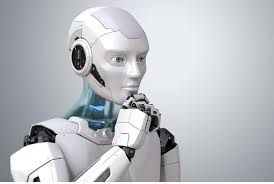Artificial intelligence humanoid, also known as AI humanoid, is a fascinating and rapidly advancing field that combines the power of artificial intelligence with humanoid robotics.
These human-like robots are designed to perform various tasks and interact with humans in a way that resembles human behavior and intelligence.
The development of AI humanoid robots holds great promise for the future, with potential applications in areas such as healthcare, customer service, entertainment, and more.
One of the key features of AI humanoid robots is their ability to learn and adapt to new situations. Through the use of advanced algorithms and machine learning techniques, these robots can analyze and understand complex data, make decisions, and perform tasks with a high degree of accuracy.
This capability enables them to take on a wide range of tasks that were previously only possible for humans to perform.
Another important aspect of AI humanoid robots is their ability to communicate with humans in a natural and intuitive way. These robots are equipped with speech recognition and natural language processing capabilities, allowing them to understand and respond to human commands and questions.
This enables them to interact with humans in a way that is similar to how we communicate with each other, making them invaluable companions and assistants in a variety of settings.
In addition to their communication skills, AI humanoid robots also possess a high level of emotional intelligence. They are able to recognize and respond to human emotions, adapting their behavior and responses accordingly.
This ability to empathize and connect with humans on an emotional level enhances their ability to assist and serve as companions in various roles, such as caregiving and therapy.
The development of AI humanoid robots also raises important ethical and societal considerations. As these robots become more advanced and human-like, questions arise about their rights and responsibilities in society.
Should they be treated as equals to humans, or as mere machines? How should we regulate their use and deployment to ensure that they are used ethically and responsibly?
Despite these challenges, the potential benefits of AI humanoid robots are vast. In healthcare, for example, these robots can assist in patient care, provide companionship to the elderly, and perform tasks that are too dangerous or challenging for humans to undertake.
In customer service, AI humanoid robots can answer questions, provide information, and assist customers in making purchasing decisions.
In the entertainment industry, AI humanoid robots are already making a splash, with examples such as Sophia the robot becoming celebrities in their own right.
These robots can perform in live shows, interact with audiences, and even star in movies and TV shows. Their ability to entertain and engage audiences is a testament to their advanced capabilities and potential.
As the technology continues to evolve, the possibilities for AI humanoid robots are virtually limitless. With ongoing research and development in the field of artificial intelligence and robotics, we can expect to see even more sophisticated and capable robots in the future.
These robots have the potential to revolutionize many aspects of our lives, from healthcare and education to entertainment and beyond.
In conclusion, AI humanoid robots are a remarkable innovation that combines the power of artificial intelligence with the human-like form of robotics. These robots possess advanced capabilities in areas such as learning, communication, emotional intelligence, and more.
While there are important ethical and societal considerations to address, the potential benefits of AI humanoid robots are vast and hold promise for a wide range of applications. As technology continues to advance, we can expect to see even more incredible achievements in the field of AI humanoid robotics.


